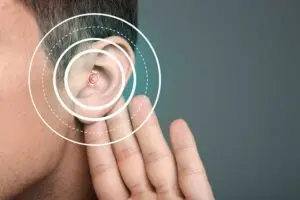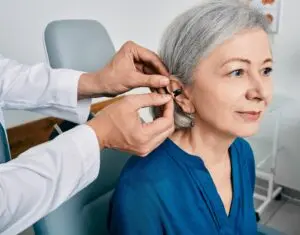Whether you’re attending concerts, at work, or doing some yard work, hearing protection is crucial in keeping your ears safe against harmful noise levels. However, you could be left exposed to potential risks if any one of a number of potential factors interferes with your hearing protection’s effectiveness. In order to understand and successfully maximize the benefits of your ear protection, it’s essential to understand these issues.
Why hearing protection falters: common circumstances
Even when you observe best practices, unexpected difficulties can occur. You use your earmuffs diligently at work, wear earplugs at concerts, and stay away from noisy situations whenever you can. Yet, some variables can still interfere with your hearing protection’s effectiveness. Fortunately, you can ensure the protection of your hearing by becoming aware of these common issues and making informed adjustments.
1. Specific circumstances call for specific types of hearing protection
Hearing protection isn’t one-size-fits-all, and picking the wrong type for a given environment can reduce its effectiveness.
In general, hearing protection falls into two main categories:
- Earplugs: Little foam or rubber plugs that tuck tightly into the ear canal.
- Earmuffs: Larger devices that go over the whole ear, similar to headphones.
Each kind has its appropriate use case:
- Earplugs are appropriate for settings with continual noise levels, like factory floors or airplane cabins.
- Earmuffs are better for situations with intermittent noise, like a construction site where machinery starts and stops constantly.
If you’re in a quiet setting and need to momentarily remove your hearing protection, earmuffs are easier to deal with. However, earplugs, particularly disposable ones, can be easily lost, leaving you unprotected when noise levels spike again. Selecting the right hearing protection for your needs is the first step toward safeguarding your hearing effectively.
2. Fit and function are affected by anatomy
Everybody’s ears are unique, which means not all hearing protection devices will fit everyone equally well. Basic earplugs and earmuffs are often designed with average dimensions in mind, but your ear anatomy could require a more customized solution.
- Smaller ear canals: The noise-blocking capability of standard-sized earplugs may not be effective if smaller ear canals prevent the formation of a sufficient seal.
- Larger ear structures: Bigger ears can make earmuffs uncomfortable, causing gaps in the seal that allow noise to enter.
If your hearing protection doesn’t fit properly, you could become discouraged and choose to quit using them altogether which can endanger your hearing. Think about buying custom-fitted earplugs or professionally fitted earmuffs if you spend a lot of time in loud settings. Deciding to go with a more personalized approach will provide you with greater comfort and effectiveness, keeping your hearing safe in any situation.
3. Failing to maintain or replace hearing protection
Like any piece of equipment, hearing protection devices require maintenance to continue to be effective. Their ability to supply sufficient protection can be jeopardized by things like incorrect cleaning, wear and tear, and failure to replace them when necessary.
The following are a few tips on how to maintain hearing protection:
- Clean Properly: Debris and earwax can accumulate on your hearing protection over time. In order to safely and effectively clean your earplugs or earmuffs, consult the manufacturer-recommended cleaning instructions.
- Check for Damage: Regularly inspect the elastic band on earmuffs. A slack or stretched band can reduce their snug fit, lowering their noise-blocking ability.
- Replace Cushions: The pliability of earmuff cushions can decrease over time. Replace them when necessary to maintain a proper seal.
Your hearing protection will be less effective and potentially useless if you disregard these basic maintenance tasks. In order to ensure reliable and efficient performance, and to extend their lifespan, it’s essential to keep these regular maintenance schedules.
What is the role of a hearing specialist?
Make an appointment with us for an evaluation if you think that your ear protection may not be getting the job done. We can examine your current devices, recommend alternatives, and even provide custom solutions tailored to your specific requirements.
Keeping your hearing safe is a commitment that lasts a lifetime and it’s essential that you do it with the right tools. By addressing these common challenges, you can confidently protect your ears from damaging noise and preserve your hearing for years to come.
[blogcta]





